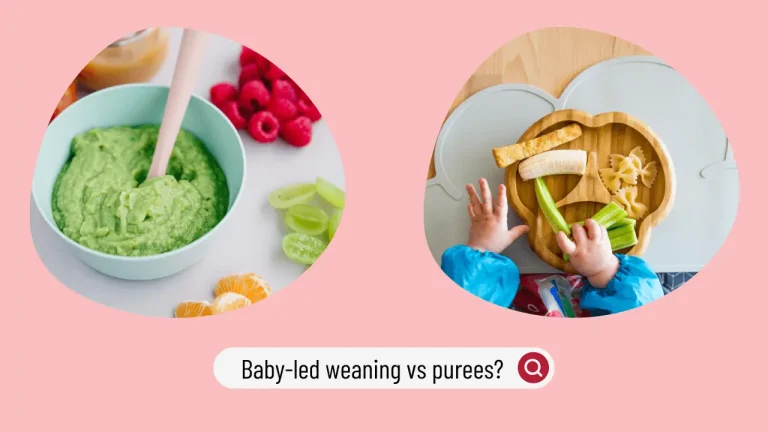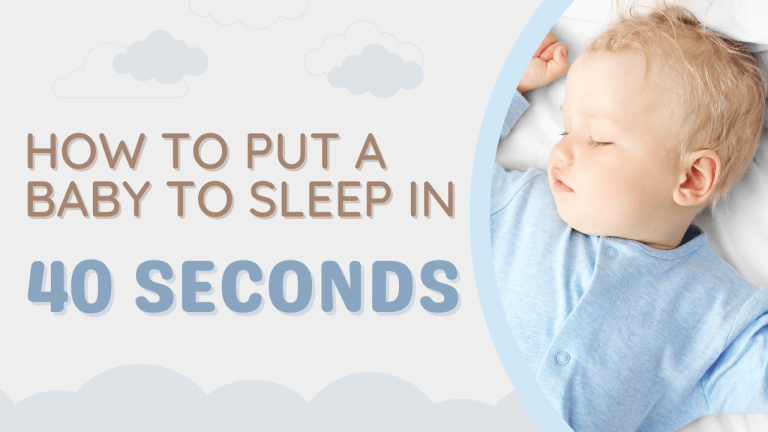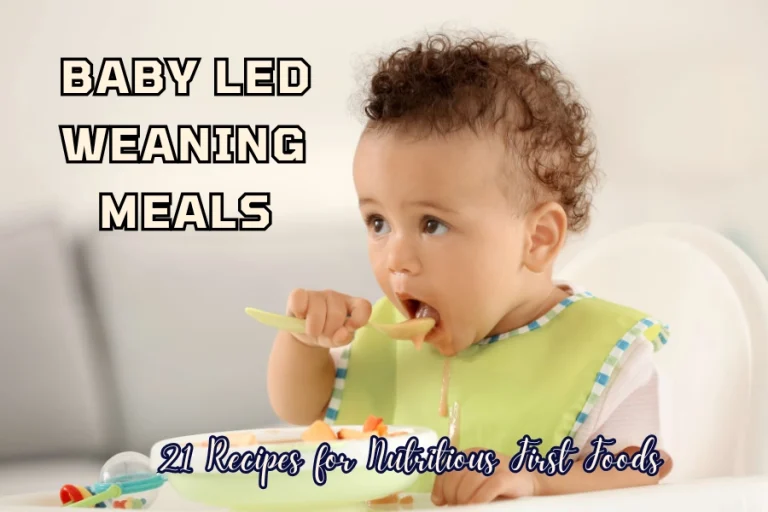There are two ways you can feed your baby: breast milk or formula from a bottle. For bottle feeding, you need patience because your baby needs time to get used to it.

How Do You Prepare A Bottle?
Bottle-feeding skills for your baby help ensure they get the nutrition they need for growth and development. Following these guidelines can help ensure a smooth and successful bottle-feeding experience for both you and your baby.
- If your baby is drinking formula, select an appropriate type for them. There are formulas for different ages and needs. For example, there are formulas for babies with lactose intolerance or food allergies. Always check the end date on the formula package to ensure it is still good for use.
- Wash all parts of your baby’s bottles with warm, soapy water. Use a sterilizer to kill germs that could make your baby ill.
- If you are using powdered or concentrated formula, boil water. Let it cool for 30 minutes before pouring the right amount into the bottle.
- Measure the correct amount of formula and add it to the water, making sure to adhere to the manufacturer’s instructions for proper mixing.
- Fasten the nipple to the bottle and shake it thoroughly until the formula is fully dissolved and well combined.
- Pour a small amount of the formula on your wrist to ensure it is warm, but not too hot. If using stored breast milk or ready-made formula, warm it in a bowl of warm water or use an electric bottle warmer.
- Cradle your baby with their head in the crook of your arm and lift their head to a semi-upright position. Or, sit them up in your lap, which is beneficial for babies with reflux. Avoid feeding your baby while they are lying down. This prevents the formula from flowing into their middle ear. It can cause an infection1.
- Nourish your baby until they exhibit signs of being satisfied. Don’t be concerned if they don’t finish the entire bottle unless it happens frequently and they consistently eat too little.
- Massage your baby’s back to release trapped gas after feeding.
- The formula is not sterile and can grow bacteria. Discard any refrigerated formula within 12 hours of preparation. If left at room temperature, discard it after 2 hours. Also, throw away any leftover formula from the bottle your baby was drinking from.

How To Bottle Feed A Baby In The Right Way?
Before feeding your baby, mothers should carefully prepare and check the temperature of the bottle. Choose a position that is snug and stable for both you and your baby. Hold the bottle at a slight angle to encourage your baby to suckle gently. Make sure the milk fills the entire nipple to avoid your baby swallowing air, which can cause gas and fussiness.
If during feeding, your baby’s mouth makes air bubbles, pause and gently rub or pat his back. Release air from your baby’s stomach at regular intervals.
Try pacing the feeding and helping your baby regulate his hunger. So slow down and let your baby nurse at his own pace. Take breaks to burp or reposition them. If they seem uninterested, pause the feeding and try again in a few minutes. If your baby seems to want to eat more, you can feel free to add a little more milk
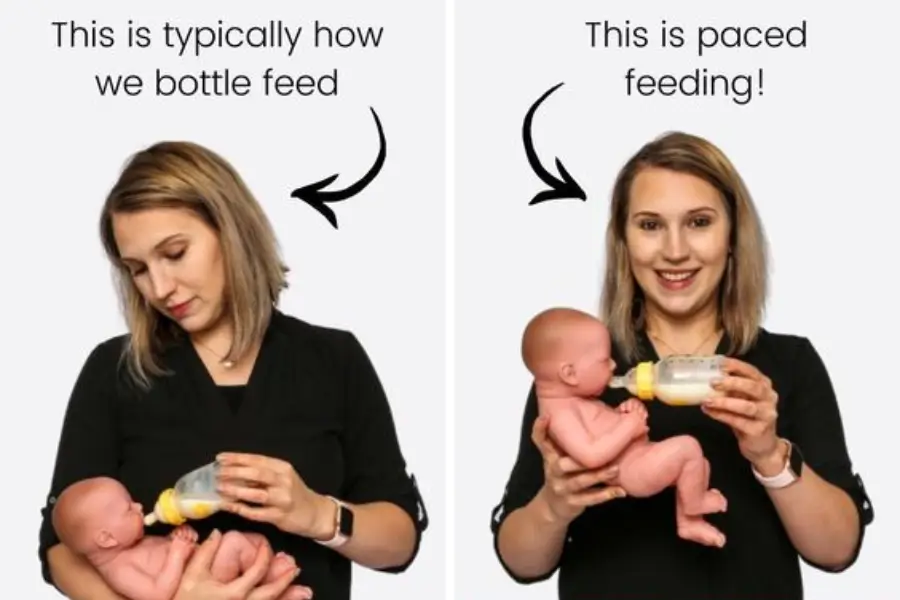
How Long Does A Bottle Last For?
Weaning off expensive breast milk or formula can be difficult. But sometimes it’s necessary
For expressed breast milk, keep these time frames in mind. You can freeze it for 6 to 12 months and refrigerate it for up to 4 days. After thawing, you should use it within 24 hours. After you start feeding a bottle of breastmilk, it’s safe for up to 2 hours.
You can refrigerate a prepared bottle of formula for up to 24 hours. However, once you give your baby a sip, you must use the formula within 1 hour. Bacteria multiply quickly in milk-based products.
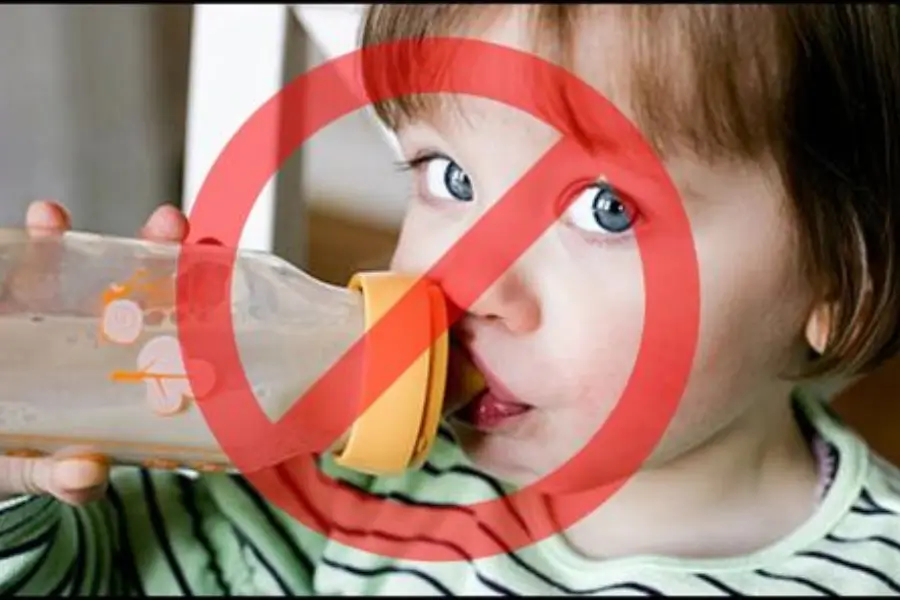
How Often Should You Bottle-Feed A Baby?
You may feel like you’re constantly preparing bottles, but this intense feeding phase will pass quickly. In the early days, you’ll be feeding your baby every 2 to 4 hours, with newborns usually drinking about 2 ounces per feed.
As your baby develops, feeding sessions will become less frequent and their intake will rise. By approximately 2 months, they may consume 4 to 6 ounces per feeding. At 6 months, they might intake around 8 ounces.
Don’t get too caught up in maintaining a tight feeding schedule. You should only feed your baby when he or she shows signs of hunger. Babies grow rapidly and may need to feed more often during growth spurts. Look for signs of hunger such as biting your hand, sucking your tongue, or pulling up. If you gently caress your baby’s cheek with your finger or the nipple2 of a bottle and your baby turns to face that direction, he or she is probably ready to eat.

How Much Do Bottle Feed Babies Drink?
If you’re bottle-feeding your baby, you can use stored breast milk, formula, or a combination of both. Generally, babies need around 2.5 ounces of formula per day for each pound they weigh. Newborns have small stomachs and need frequent feedings with small amounts of milk, typically 1-2 ounces every 2 to 3 hours.
As they grow, they’ll consume more milk but eat less frequently. Once solid foods3 are introduced, around 600 ml of milk or formula per day is needed. Between 6 and 12 months, your baby will need milk or solid foods 5 to 6 times daily. Continue with formula or breast milk until at least 1 year old, after which cow’s milk can be introduced. Recognize hunger signs like rooting, bringing hands to the mouth, and sucking on objects to ensure your baby stays happy and well-fed.
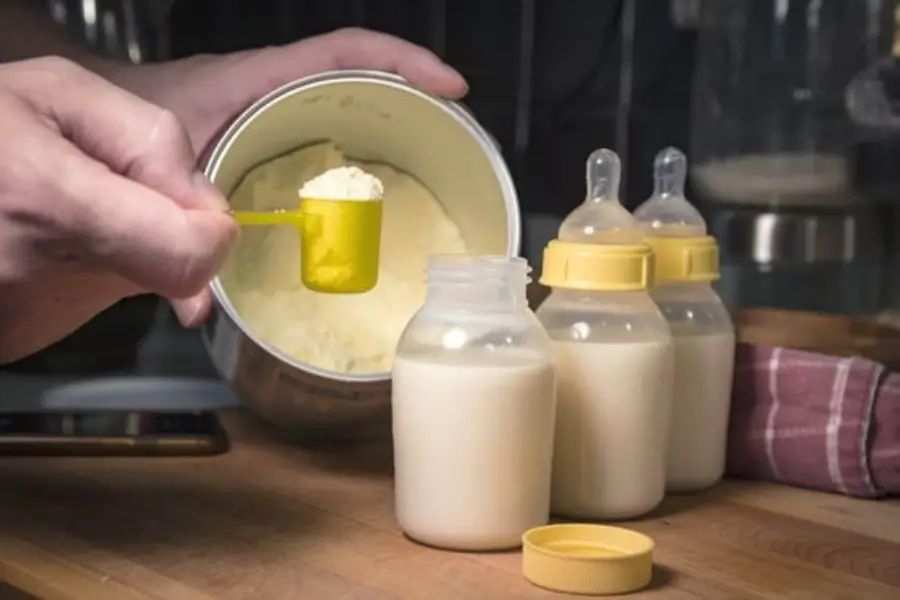
Other Tips For Bottle Feed A Baby
Bottle feeding requires proper techniques to ensure it does not affect the health of the mother and baby. Here are some useful tips:
Clean and sterilize your bottles before their initial use. You can use a steam sterilizer or a dishwasher. It’s not necessary to sanitize them between each use, but always have a clean bottle ready to avoid nighttime washing while your baby waits. Thoroughly clean bottles between uses, especially those with multiple parts and hidden crevices. You can also clean them in the dishwasher. Discard any leftover formula or breast milk and rinse the bottle after each feeding.
Gradually introduce formula by combining it with breast milk, increasing the amount of formula at each feeding. You can mix both in the same bottle to help your baby adjust to the taste of the formula. Prepare the formula separately following the manufacturer’s instructions, using water as directed, not breast milk. Once the formula is prepared, blend it with the breast milk. Keep in mind, that once mixed with formula, the bottle should be used within 60 minutes.
Doctors do not encourage mothers to add cereal to their milk bottles. Although some people believe it helps your baby feel fuller and sleep longer, it can lead to excessive weight gain and constipation. Doctors may recommend adding a little extra oatmeal to your cereal. This may help treat gastroesophageal reflux disease (GERD).

Takeaway
The article has provided information on how to bottle feed a baby. Although it is a lot to take in at first, bottle feeding will soon become second nature. You might face some challenges or obstacles, but you’ll quickly learn what works best for you.
Sources
- Horan, T. C., Andrus, M., & Dudeck, M. A. (2008). CDC/NHSN surveillance definition of health care-associated infection and criteria for specific types of infections in the acute care setting. American Journal of Infection Control, 36(5), 309–332. https://doi.org/10.1016/j.ajic.2008.03.002 ↩︎
- Pados, B. F., Park, J., Thoyre, S. M., Estrem, H., & Nix, W. B. (2015b). Milk flow rates from bottle nipples are used for feeding infants who are hospitalized. American Journal of Speech-language Pathology, 24(4), 671–679. https://doi.org/10.1044/2015_ajslp-15-0011 ↩︎
- Kong, F., & Singh, R. (2008c). Disintegration of solid foods in the human stomach. Journal of Food Science, 73(5). https://doi.org/10.1111/j.1750-3841.2008.00766. ↩︎

